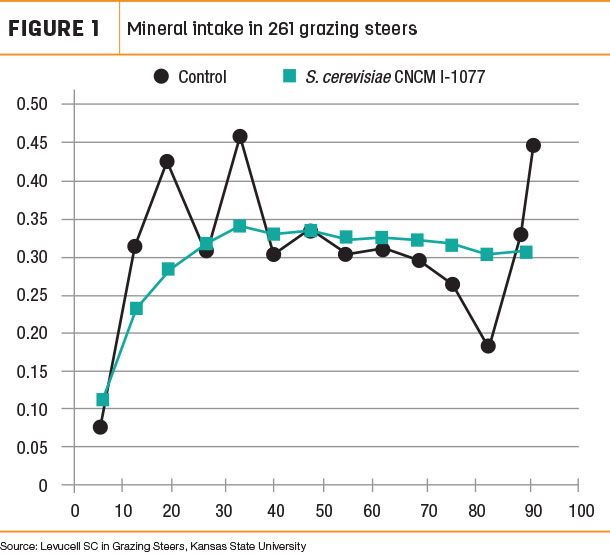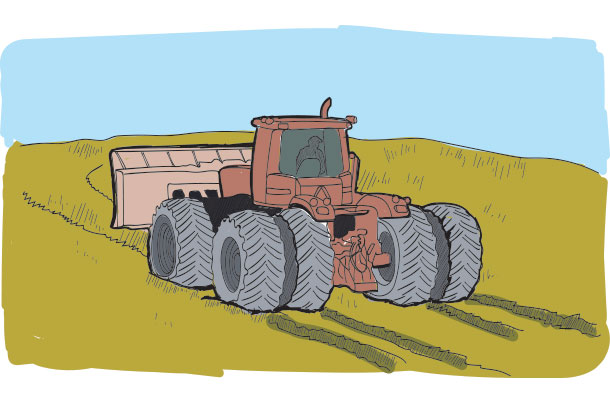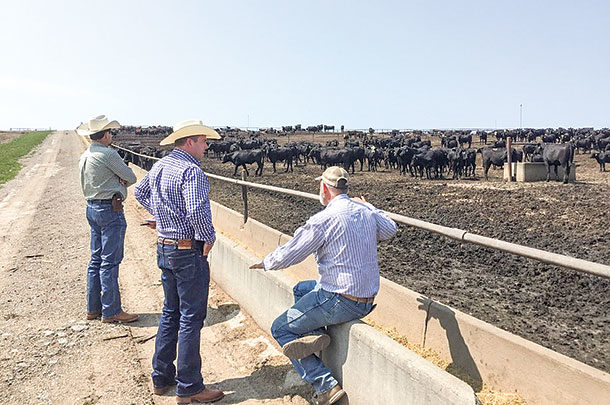Stockers and backgrounders are growing cattle in the truest sense. Here, the animal uses much of its energy to gain weight and strengthen its immune system against disease challenges.
The name of the game for stockers and backgrounders is to make the best use of available forages. Corn silage is gaining popularity as a common part of the stocker and/or backgrounder ration where, traditionally, operations have used wheat straw or low-quality hay. Creating corn silage is not a new proposition for most producers. However, its importance to the ration is increasing as production of alfalfa and native grass decreased in the past decade.
Create more, high-quality feed
Harvesting and putting up silage is a big task, but the science of silage leaves little room for skimping on good management practices. The better a producer does at all phases of the ensiling process, it will pay dividends later when there is more silage to be fed – and higher-quality silage to fuel animal growth (see sidebar below).
The most important objective is to reduce exposure to oxygen, the worst enemy to high-quality silage. Oxygen can slow down the ensiling fermentation and allow spoilage organisms to grow. This can result in lost dry matter (DM) and nutrients, or worse, affect herd performance, health and reproduction.
A key to improving the availability of nutrients in silage – and improving stability during feedout – is adding a research-proven forage inoculant at harvest. Using an inoculant containing an efficient, proven homolactic lactic acid bacterium (LAB) like Pediococcus pentosaceus, coupled with enzymes to drive the fermentation, can ensure a fast, efficient initial fermentation, leading to a rapid pH drop and preventing the growth of spoilage organisms that cause high DM losses.

After opening, silage is once again exposed to oxygen. Specific inoculant formulations including Lactobacillus buchneri have been shown to enhance silage stability and provide benefits all the way to feedout.
With increasing storage time, corn silage becomes more digestible. Long-term storage gives the ensiling process time to break down proteins in the kernel that form a matrix with starch, making it more available for digestion. If possible, keep forages ensiled for a minimum of four months to allow the natural ensiling process to improve starch digestibility.
Prepare the rumen
For grazing cattle, adapting to rations using corn silage can be a tough transition. One way to ease into the ration is by preparing the animal’s rumen while on pasture.
An efficient rumen is the foundation for healthy, productive cattle. The rumen is inhabited by an abundant and diverse microbial community that digests and ferments 70 to 80 percent of the animal’s feed. Without these microbes, cattle would not be able to digest fibrous feeds – especially forages. Helping stabilize the rumen environment can lead to more consistent and efficient production benefits. Probiotics are one way producers can achieve these results.
In fact, in a study of cattle on wheat pasture, including an active dry yeast (ADY) probiotic containing Saccharomyces cerevisiae CNCM I-1077 to the mineral mix showed improved average daily gain (ADG) and even improved the consistency of mineral consumption.
In ruminants, some ADY probiotics are proven to improve fiber digestibility as the beneficial microbes help degrade the cellulose. Not all probiotics have these properties. The effect is dependent on the exact strain used in the probiotic. For example, S. cerevisiae CNCM I-1077 received a functionality claim from the FDA, which states that supplementation can aid in maintaining cellulolytic bacteria population in the rumen of animals fed greater than 50 percent concentrate.
Plainly, this means specific probiotics in starter and growing diets can help the rumen mature and optimize the organ’s function. In some cases, producers have been able to use lower-quality forage and achieve improved performance by making nutrients more available to the animal. This is particularly important for producers grazing cattle on late-season forages, which can have fewer nutrients.
Feedout tips
Once the rumen is prepared, producers can begin to introduce corn silage. Often, producers set their silage inclusion levels based on silage available and cattle inventory. Limit silage to no more than 15 percent of the ration for newly received cattle or animals coming off pasture. Silage can be fed in greater amounts through a step-up program once cattle are started and eating well.
As producers are feeding out silage, it’s common to notice a little spoiled silage on the top and sides of a bunker. It is important to avoid the temptation to feed this spoiled silage – even in small amounts. Feeding even small amounts of spoiled silage can disrupt normal rumen function and can lead to reduced feed intake and decreased production. Including just 5.4 percent of badly spoiled silage in the ration of beef steers reduced DM intake by 1.3 pounds per day and reduced neutral detergent fiber (NDF) digestibility of the whole ration by 7 points, according to a study by Kansas State University.
Corn silage can be a significant and economical addition to any stocker or backgrounder feeding program. Preparing both silage and cattle rumen function will help make forage profitable and maximize performance.
Visit Lallemand Animal Nutrition for more information. ![]()
PHOTO: Keep an eye out for spoiled silage in your bunks since that can affect cattle rumen and lower feed intake. Photo courtesy of Lallemand Animal Nutrition.
Renato Schmidt has a Ph.D. in animal nutrition from University of Delaware and is employed by Lallemand Animal Nutrition, North America in technical services. Email Renato Schmidt.
Angel Aguilar is a nutritional consultant with Lallemand Animal Nutrition.
References omitted but are available upon request. Click here to email an editor.

-
H Nielsen
- Technical Services – Ruminant
- Lallemand Animal Nutrition
- Email H Nielsen
6 TIPS FOR IMPROVING SILAGE QUANTITY, QUALITY

Producers should keep in mind six basic silage harvest and management points:
1. Prepare equipment and/or silos. Silos should be cleaned and repaired if needed; equipment should be serviced and calibrated prior to harvest to help avoid delays and bottlenecks.
2. Harvest at the right maturity and moisture level. Harvesting at the best stage of maturity and achieving proper dry matter (DM) content for the specific forage or storage structure helps maximize nutrients and/or DM preservation and feed intake by the animal.
3. Check chop length. Chop length affects ensiling characteristics and feed quality. A short chop facilitates packing, minimizing air infiltration. A longer chop length increases effective fiber in the diet. Finding a “happy medium” is important.
4. Use research-proven forage inoculants. Inoculants will help drive an efficient fermentation and/or prevent aerobic spoilage.
5. Pack well. Achieving target packing densities is vital and requires adequate packing weight, time and technique.
6. Seal fast and tight. Fully covering and sealing will help ensure a good fermentation, minimize nutrient and DM losses, maximize feed quality and increase production from the forage base.
Visit Quality Silage for more information on creating high-quality silage.
ILLUSTRATION: Illustration by Corey Lewis.








